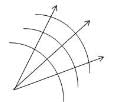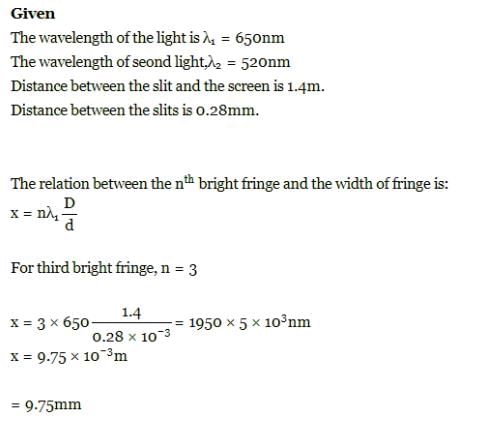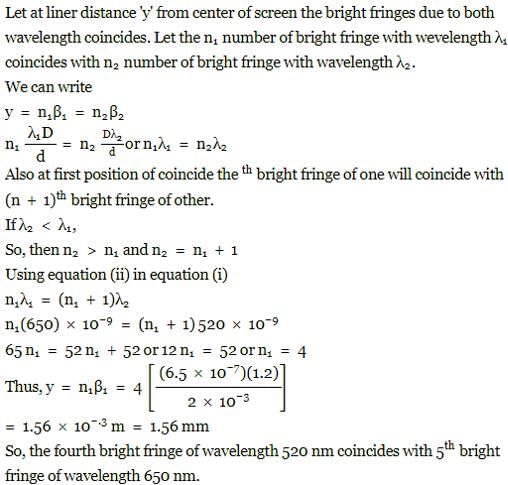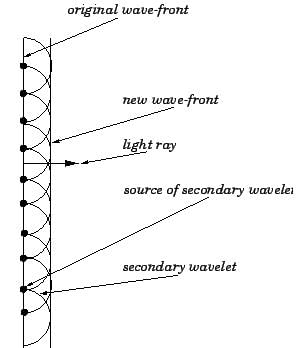Test: Wave Optics - JEE MCQ
25 Questions MCQ Test - Test: Wave Optics
Referring to the Young’s double slit experiment, Phase difference corresponding to a Path Difference of λ /3 is
The angle of incidence at which the reflected beam is fully polarized is called
In a young’s double slit experiment, the central bright fringe can be identified by
Shape of the wave front of light diverging from a point source is
In a Young’s double-slit experiment, the slits are separated by 0.28 mm and the screen is placed 1.4 m away. The distance between the central bright fringe and the fourth bright fringe is measured to be 1.2 cm. Determine the wavelength of light used in the experiment
Shape of the wave front of light emerging out of a convex lens when a point source is placed at its focus.
A beam of light consisting of two wavelengths, 650 nm and 520 nm, is used to obtain interference fringes in a Young’s double-slit experiment. The distance between the slit and the screen is 1.4m and the distance between the slits is 0.28mm. Find the distance of the third bright fringe on the screen from the central maximum for wavelength 650 nm.
A beam of light has a wavelength of 650 nm in vacuum. What is the wavelength of these waves in the liquid whose index of refraction at this wavelength is 1.47?
A beam of light consisting of two wavelengths, 650 nm and 520 nm, is used to obtain interference fringes in a Young’s double-slit experiment. What is the least distance from the central maximum where the bright fringes due to both the wavelengths coincide?
Shape of the wave front of portion of the wave front of light from a distant star intercepted by the Earth
Which of the following phenomenon cannot be explained by diffraction?
Estimate the distance for which ray optics is good approximation for an aperture of 4 mm and wavelength 400 nm.
According to Huygens construction relation between old and new wave fronts is
We say that a light wave is linearly polarized in y direction if
A parallel beam of light of wavelength 500 nm falls on a narrow slit and the resulting diffraction pattern is observed on a screen 1 m away. It is observed that the first minimum is at a distance of 2.5 mm from the centre of the screen. Find the width of the slit.
If we have two coherent sources S1andS2 vibrating in phase, then for an arbitrary point P constructive interference is observed whenever the path difference is



















